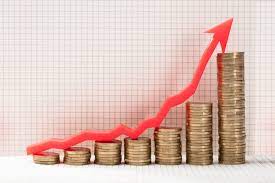You must need to study Construction of Price Index. Economic variables such as prices, production, cost, exports, etc, change with time. The economists are frequently interested to measure and to make comparisons of such changes. For this purpose, they make use of the statistical technique of index numbers.

There are many kinds of index numbers e.g. price and weighted index numbers, they are widely used in economics. Price index numbers not only give us a measure of changes in or ; level, but also indicate the changes in the standard of living of people
DEFINITION:
An index numbers is a device, which shows by its variation the changes in a magnitude, which is not capable of accurate measurement in it or of direct valuation.
PRICE INDEX NUMBER:
Price index numbers are statistical device to measure the changes in the price of a particular commodity or a group of commodities with respect to time.
All Steps of Index Price Construction;Construction of Price Index.You Must Follow All Guidelines.

The prices of different commodities are given for different quantity units (e.g. price of wheat per mound, price of cloth per meter, etc.) and they cannot be compared directly, so these prices are converted into percentages. Construction of index numbers involves many steps, which are outlined below:
- Selection of Commodities:
In the economy, thousands of commodities are marketed. We cannot study the change in price of every commodity. Thus we have to make a selection. This selection will depend upon the purpose of index numbers. All-important commodities affecting the expenditure of people should be included.
- Selection of Prices:
After the selection of commodities, we must also decide the type of prices. For example we may use wholesale prices or retail prices. As the prices will be different in different markets at different dates, the averages of these prices can be used.
- Selection of the Base Year:
The year with which the prices of other years are to be compared called base year. The year selected, as base must be a normal i.e. it should not be a year of war, famine or extreme political disturbances.
- Choice of Average:
Index numbers make use of some averages since there are different kinds of averages, e.g., arithmetic mean, geometric mean and median etc. We should select the suitable one. However, for simplicity, we vnc use arithmetic mean.
- Selection of Suitable Weights:
In order to show the relative importance of commodities, weights are given to their prices. The more important ones are allotted higher weights e.g. if sugar is considered having wei..ht one then bread being more important must be given a weight more tha: one. Construction of the price index numbers is explained with the help c* following examples:
- Selection of Suitable Weights:
In order to show the relative importance of commodities, weights are given to their prices. The more important ones are allotted higher weights e.g. if sugar is considered having weight one then bread being more important must be given a weight more tha: one. Construction of the price index numbers is explained with the help following examples:
SIMPLE INDEX NUMBERS:
Suppose we are given the following data and required to construct index number taking 2005 as base year:
| Commodity | Prices (rupees per unit) | |
| 2005 | 2016 | |
| Wheat | 10 | 200 |
| Rice | 20 | 500 |
| Cotten | 25 | 800 |
| Ghee | 2 | 48 |
In order to construct index numbers we shall (i) take the every price in 2005 as 100 (ii) convert the prices in 2016 to percentages. These percentages are called price relatives (iii) find out average of percentages as given below:
| Commodity | 2005 | 2016 | ||
| Price | Price relative | Price | Price relative | |
| Wheat | 10 | 100 | 200 | 200
-yy x 100 = 2000 |
| Rice | 20 | 100 | 500 | 500
yj-x 100 = 2500 |
| Cotton | 25 | 100 | 800 | 600
yrx 100 = 3200 |
| Ghee | 2- | 100 | 48 | 48
y x 100 = 2400 |
| Total | 400 | 10100 | ||
| Index Number (Average) | 400 ,„„ —=ioo | 10100
4 – 2525 |
||
fhe index number shows that the general price level rose 25 times from 2005 to 2016. It means value of a rupee of 2016 equal to four paisas of2005.
WEIGHTED INDEX NUMBERS:
We know that all the commodities are not equally important. For example the change in the prices of wheat have greater effect on the consumer than the change in the prices of ball pens. To consider this difference in importance, we give weightage to prices. Prices of more important commodities are given higher weights. This method will be clear from the following example. (In this example weights have been assumed, but there are also some other methods for selecting weights).
| Commodity | 2005 | 2016 | ||||||
| Prices | Price relative | Weight | Price relative | Price | Price relative | Weight | Weighted price relative | |
| Wheat | 10 | 100 | 8 | 800 | 200 | 200
-io-xioo = 2000 |
8 | 2000 x8 = 16000 |
| Rice | 20 | 100 | 5 | 500 | 500 | 500 ^x100
= 2500 |
5 | 2500 x5 = 12500 |
| Cotton | 25 | 100 | 3 | 300 | 800 | = 3200 | 3 | = 9600 |
| Ghee | 2 | 100 | 3 | 300 | 48 | = 2400 | 3 | = 7200 |
| Total | 19 | 1900 | 19 | 45300 | ||||
| Index No. | (Average) = 1900/19 = 100 | 45300/19 = 2384.21 | ||||||
Thus we find that the prices have in effect rose by 24 times approximately from 2005 to 2016 and value of money fell in the same proportion. Weighted index number is a better device for measuring real effect of the changes on the value of money. However, preparation of weighted index numbers requires greater care, especially the selection of weights is very difficult.
